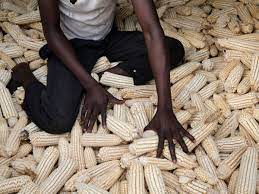AT LEAST 4,1 million people are in urgent need of food aid as low production and a high cost of living take a heavy toll on Zimbabweans, a new food security report has revealed.
According to the World Food Programme (WFP)’s food security and markets monitoring report released recently, this is an increase from 3,6 million people estimated at the beginning of April to 4,1 million at the beginning of July.
“According to WFP’s HungerMap LIVE monitoring platform, which collects data from rural and urban households through mobile surveys on a number of indicators, including food consumption patterns and coping strategies — the number of people facing insufficient food had been steadily decreasing since peaking at 5,8 million people in November last year.
“However, this trend has now reversed as the estimated number of people with insufficient food consumption rose from 3,6m at the beginning of April to 4,1m at the beginning of July.
“All provinces experienced an increase in the prevalence of insufficient food consumption in this period save for Mashonaland West, Bulawayo and Harare provinces.”
The report adds that the number of people estimated to be resorting to “crisis and above” food-based coping strategies has been on a downward trend since February this year.
“According to the recent FewsNet report, the 2023 harvests improved food availability and access. However, in deficit-producing areas, widespread stressed acute food insecurity outcomes still exist while in surplus-producing areas Minimal outcomes are more prevalent.
“Overall, stocks from own production in deficit-producing areas across the country will not last long due to relatively low production, hence crisis outcomes are likely to emerge in these areas by August and September.
“Reports from the WFP Masvingo and Bulawayo field offices confirm these observations. In the surplus-producing areas, worst-affected households will likely begin facing stressed outcomes by September as food stocks decline.
“Generally, urban areas are expected to be stressed as high prices and cost of living limit poor households’ purchasing power to meet their non-food needs,” the report indicated.
A World Bank report released in April this year said Zimbabwe was still far from reducing food poverty with the country’s year-on-year inflation hovering around 200%, among some of the world’s highest rates.
In May, American economist Steve Hanke’s 2022 Misery Index adjudged Zimbabwe as the most miserable country because of the high cost of living.
The misery ranking is calculated by multiplying the rate of unemployment by two, then inflation, and bank-lending rates, minus the annual percentage change in real gross domestic product per capita.
Source Bulawayo24












